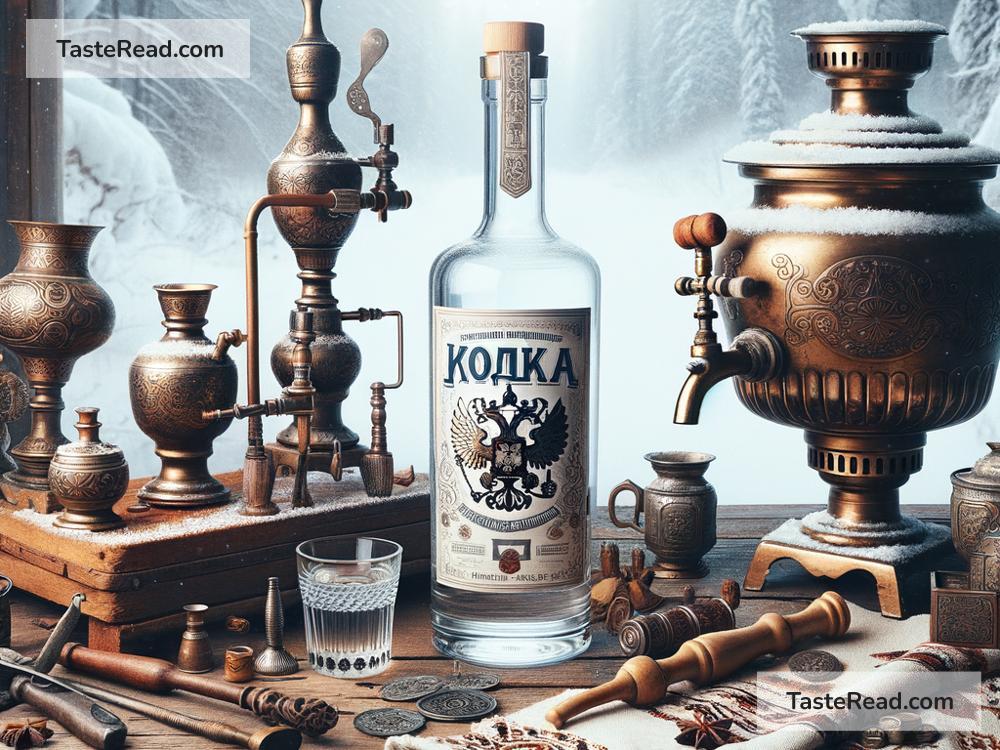The Development of Russian Vodka: A Simple Guide to Its Rich History
Russia is famous for many things, and vodka is at the top of the list. This clear, strong spirit has become a symbol of Russian culture, tradition, and hospitality. But have you ever wondered how vodka came to dominate Russian life? Its story is long, fascinating, and full of twists and turns.
In this blog, we’ll look at how vodka developed in Russia, how it became such an important part of society, and why it remains so popular today.
What is Vodka?
Vodka is a distilled alcoholic beverage, usually made from grains or potatoes. It is clear and typically has an alcohol content of around 40%. The word “vodka” comes from the Russian word “voda,” which means water, and early vodka was often referred to as “little water.” This connection to water suggests its purity and simplicity.
Unlike wine or beer, vodka has no strong flavor, which makes it versatile. It can be enjoyed straight (the traditional Russian way) or mixed into cocktails. But vodka is more than just a drink in Russia—it’s a cultural symbol.
The Early Beginnings
Vodka’s origins are debated, but most historians agree that it first appeared in Russia around the 14th century. Back then, vodka wasn’t the drink we know today. It was crude, unrefined, and used for medicinal purposes. People believed it could cure illnesses, disinfect wounds, and even improve health.
One of the first mentions of vodka in Russia came in 1386 when envoys brought “aqua vitae”—a distilled spirit—from Genoa to Moscow. Russians were intrigued by this new beverage and began experimenting with ways to make their own versions. Early vodka was made from fermented grains and distilled in what were often primitive conditions.
By the late 15th century, vodka stepped out of the realm of medicine and started being consumed recreationally. It became popular among ordinary Russians, who appreciated its warming effects during harsh winters.
Ivan the Terrible and the Rise of Vodka
In the 16th century, vodka took on its modern role as a commercial commodity. Ivan the Terrible, Russia’s first Tsar, played a key role in this development. In 1540, Ivan introduced the first government-controlled vodka production system. He opened state-run taverns, known as “kabaks,” where people could purchase vodka.
Ivan’s monopoly ensured that the government would profit from vodka sales, while tightly controlling its production. Kabaks soon spread across Russia, and vodka became accessible to everyone—from peasants to nobility. However, drinking often led to social problems, including drunkenness and poverty, which worried some leaders.
Despite its downsides, vodka became deeply rooted in Russian daily life. It was not just a social drink; it was also used in religious rituals, celebrations, and even as currency for trading.
Vodka and Peter the Great
Peter the Great, who ruled Russia in the late 17th century, contributed to vodka’s rise as a cultural staple. Peter is remembered for modernizing Russia and introducing Western ideas to the country, but he also loved vodka. He enjoyed drinking with his friends and encouraged others to join him.
Under Peter’s rule, vodka became associated with camaraderie and social bonding. Drinking vodka together became a symbol of friendship and loyalty. It also played a major role in official celebrations and military events.
Peter may have fueled Russia’s drinking culture, but he also tried to regulate it. He introduced taxes on vodka to discourage excessive drinking while still benefiting from its economic value.
Vodka in the 19th Century
By the 19th century, vodka production had become more refined. Advances in technology allowed distillers to create purer and higher-quality vodka. The government remained involved in vodka production, ensuring consistency and controlling prices.
The 19th century also saw the rise of famous Russian vodka brands, like Smirnov (now better known as Smirnoff). These brands perfected the art of making vodka and started marketing it as a premium product. Vodka was no longer just a common drink—it became a source of pride for Russia and a symbol of its identity.
The Soviet Era: Vodka as Part of Life
During the Soviet Union, vodka was everywhere. The government continued to control vodka production, making it affordable and accessible to the masses. It was a common sight at weddings, funerals, and every kind of social gathering. Vodka even became a part of Soviet propaganda, celebrated as the “people’s drink.”
However, excessive vodka consumption became a serious problem during this time. To address the issue, Soviet leaders often tried to restrict vodka sales. For example, Mikhail Gorbachev launched an anti-alcohol campaign in the 1980s, limiting vodka production and raising its price. But this led to black-market vodka sales and frustrated many citizens.
Vodka in Modern Russia
Today, vodka remains an important part of Russian culture, though its consumption has decreased over the years. Russians continue to enjoy vodka during celebrations, and it is still seen as a sign of hospitality when offered to guests.
Russian vodka brands are recognized around the world for their quality, and many people associate vodka with Russia itself. Modern vodka is made with advanced techniques, ensuring smoothness and purity. It’s not just a drink—it’s history in a glass.
Conclusion
Vodka’s development in Russia reflects the country’s history, struggles, and traditions. From humble medicinal beginnings to its role in celebrations and trade, vodka has been intertwined with Russian life for centuries. Whether you drink it straight or mix it into cocktails, vodka tells the story of a nation—a story of resilience, creativity, and celebration.
So, the next time you sip vodka, remember its rich history and the role it has played in shaping Russia. Cheers—or as Russians say, “Na zdorovye”!


